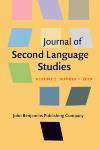
第二语言研究杂志(英文)(Journal of Second Language Studies)(国际刊号) 知网目次
- AMI入库
- 主管单位:
- 主办单位:
上海交通大学外国语学院
- 国际刊号:
2542-3835;E-ISSN 2542-3843
- 国内刊号:
- 学科分类:
- 字数:
-
- 有无基金:
- 周期:
国际号刊-半年刊
- 特殊属性:
外文期刊
- 电话:
- 邮箱:
jsls2016@126.com(官网邮箱)
- 复合因子:
0
- 综合因子:
0
- 收录:
知网目次
- 级别:
AMI入库
期刊简介
《第二语言研究杂志》期刊已被查看: 次
更新频次
单位占比
一作占比
投稿指南
1、该刊只有国际刊号。
2、投稿方式:在线投稿。
3、官网网址:https://benjamins.com/catalog/jsls
http://www.jbe-platform.com/content/journals/25423843
4、投稿网址:https://www.editorialmanager.com/jl2s
5、主办单位网址:
https://sfl.sjtu.edu.cn/Data/View/2587
(上海交通大学外国语学院)
6、出刊日期:半年刊,一年出版2期。
2023年9月7星期四
《第二语言研究杂志(英文)》期刊简介
(Journal of Second Language Studies)
Journal of Second Language Studies (JSLS)于2018年《当代外语研究》编辑部创刊,杨枫任创刊主编,目前,由剑桥大学袁博平教授担任总主编(general editor),上海交通大学吴诗玉教授和常辉教授担任联合执行主编(executive editor),由来自世界各地的知名二语研究专家和学者担任编委成员和咨询委员。自创刊以来,Journal of Second Language Studies致力于促进二语习得和教学领域的学术交流,推动该领域理论和教学实践的发展;特别重视跨学科研究,致力于传播与心理学、认知科学以及社会文化相结合来探讨第二语言学习和习得理论和实践的最新成果。此外,JSLS还致力于传播汉语作为第二语言的学习和教学的研究成果。
《第二语言研究杂志(英文)》投稿指南
(Journal of Second Language Studies)
【官网信息】
GUIDELINES
1. All submissions should be submitted through the journal’s online submission and manuscript tracking site, and inquiries should be directed towards the editors by e-mailing the journal at: jsls2016@126.com.
2. Submissions should be prepared according to the Publication Manual of the American Psychological Association (APA) 6th edition. Submissions that do not follow the APA style or that do not correspond to the focus of the Journal of Second Language Studies will be returned to authors without review.
3. Contributions must be in English. Spelling should be either American English or British English and should be consistent throughout the paper. If not written by a native speaker, it is advisable to have the paper checked by a native speaker prior to submission.
4. All articles published in this journal are double-blind peer reviewed. Self-identifying citations and references in the article text should either be avoided or left blank when manuscripts are first submitted. Authors are responsible for reinserting self-identifying citations and references when manuscripts are prepared for final submission.
5. For initial submission, authors should submit their MANUSCRIPT in electronic form in Word only, double-spaced with 75px/1 inch margins. While submitting the manuscript authors must provide a concise and informative title of the article; the name, affiliation, and address of each author; a self-contained abstract in English (100-150 words) that should not contain any undefined abbreviations or unspecified references, and five to ten keywords to be used for indexing purposes.
6. Submissions should be approximately 9,000 words long.
7. Upon acceptance, the author will be requested to furnish the FINAL VERSION in electronic form (Word).
8. Authors are responsible for observing copyright laws when quoting or reproducing material. The copyright of articles published in the Journal of Second Language Studies is held by the publisher. Permission for the author to use the article elsewhere will be granted by the publisher provided full acknowledgement is given to the source.
9. Authors should provide the final version of the 100-150 word abstract in English.
10. Papers should be reasonably divided into sections and, if appropriate, subsections. The headings of these subsections should be numbered in Arabic numerals (1.; 1.1.; 1.1.1.). Authors are advised not to use more than three levels of displayed headings.
11. Line drawings (FIGURES) should be submitted as reproducible originals. They should be numbered consecutively, and appropriate captions should be provided. Reference to any FIGURES should be given in the appropriate place where they should appear.
12. TABLES should be numbered consecutively and should be referred to in the main text. TABLES should be created with Word’s table function, not as spreadsheets.
13. Notes should appear as ENDNOTES and should be concise, kept to a minimum, and numbered consecutively throughout the paper. In the published end format endnotes will appear as footnotes.
14. REFERENCE in the text should be formatted according to APA style:
A Work by Two Authors: Name both authors in the signal phrase or in the parentheses each time you cite the work. Use the word “and” between the authors’ names within the text and use the ampersand in the parentheses.
Research by Wegener and Petty (1994) supports...
Research supports…. (Wegener & Petty, 1994)
A Work by Three to Five Authors: List all the authors in the signal phrase or in parentheses the first time you cite the source.
(Kernis, Cornell, Sun, Berry, & Harlow, 1993)
In subsequent citations, only use the first author’s last name followed by “et al.” in the signal phrase or in parentheses.
(Kernis et al., 1993)
In et al., et should not be followed by a period.
Six or More Authors: Use the first author’s name followed by et al. in the signal phrase or in parentheses.
Harris et al. (2001) argued...
(Harris et al., 2001)
Two or More Works in the Same Parentheses: When your parenthetical citation includes two or more works, order them the same way they appear in the reference list, separated by a semi-colon. That means that they are in alphabetical, not chronological order.
(Berndt, 2002; Harlow, 1983)
Authors with the Same Last Name: To prevent confusion, use first initials with the last names.
(E. Johnson, 2001; L. Johnson, 1998)
Two or More Works by the Same Author in the Same Year: If you have two sources by the same author in the same year, use lower-case letters (a, b, c) with the year to order the entries in the reference list. Use the lower-case letters with the year in the in-text citation.
Research by Berndt (1981a) illustrated that...
Book (monograph):
Montrul, S.A. (2008). Incomplete acquisition in bilingualism. Re-examining the age factor. Amsterdam: John Benjamins.
Dissertation:
Anderson, B. (2002). The fundamental equivalence of native and interlanguage grammars: Evidence from argument licensing and adjective position. Unpublished doctoral dissertation, Indiana University.
Book (edited volume):
Brinton, D., Kagan, O., & Bauckus, S. (Eds.). (2008). Heritage language education. A new field emerging. London: Routledge.
Article (in book):
Bullock, B.E., & Toribio, A.J. (2009). Trying to hit a moving target: On the sociophonetics of code-switching. In L. Isurin, D. Winford, & K. de Bot (Eds.), Multidisciplinary approaches to code switching (pp. 189-206). Amsterdam: John Benjamins.
Articles (in journal):
Grosjean, F. (1998). Studying bilinguals. Methodological and conceptual issues. Bilingualism, Language and Cognition, 1(2), 131-149.
Bobaljik, J.D. & Wurmbrand, S. (2002). Notes on agrement in Itelmen. Linguistic Discovery, 1(1). Available from <http://itre.cis.upenn.edu/~myl/languagelog/archives/002967.html>
Electronic, online sources:
Liberman, M. 2006. Uptalk is not HRT. Language Log, 28 March 2006, retrieved on 30 March 2006, from <http://itre.cis.upenn.edu/~myl/languagelog/archives/002967.html>
15. Authors are kindly requested to check their manuscripts very carefully before submission in order to avoid delays in publication. The first author will receive a PDF file with page proofs for final correction. One set must be returned with corrections by the dates determined by the publication schedule. Any author’s alterations other than typographical corrections in the page proofs may be charged to the author.
16. Authors of main articles will receive a complimentary copy of the issue in which their paper appears.
17. Manuscripts should be submitted through the journal’s online submission and manuscript tracking site.
If you are not able to submit online, or for any other editorial correspondence, please contact the Executive Editor at: jsls2016@126.com
上一篇:化学工程与技术(OA学术期刊)下一篇:电子科技(不收版面费审稿费)
《第二语言研究杂志》同类语言文字期刊
-
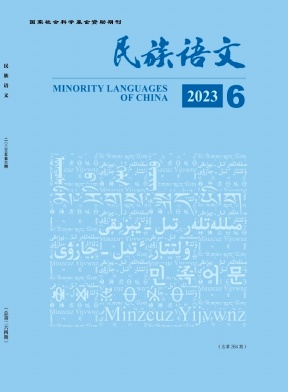
民族语文(不收版面费审稿费)
C刊,北核,AMI核心,武B+
CN中文-双月刊影响因子0.636
-
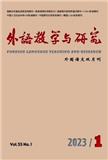
外语教学与研究(不收版面费)
AMI权威,C刊,北核,科核,武A+,国社科-合格
CN中文-双月刊影响因子2.145
-
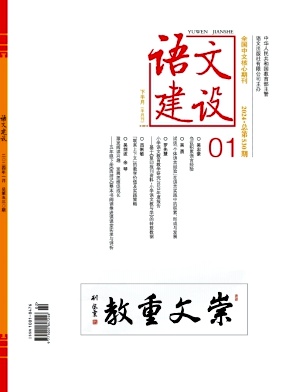
语文建设(不收版面费审稿费)
北核,AMI扩
CN中文-半月刊影响因子1.274
-
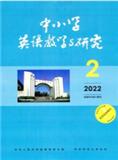
中小学英语教学与研究(不收版面费审稿费)
北核
CN中文-月刊影响因子0
-
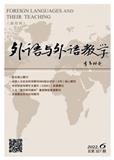
外语与外语教学(不收版面费审稿费)
C刊,北核,科核,AMI核心,武A
CN中文-双月刊影响因子2.483
-
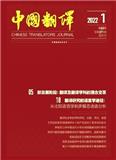
中国翻译(不收版面费审稿费)
C刊,北核,科核,AMI核心,武A
CN中文-双月刊影响因子3.156
-
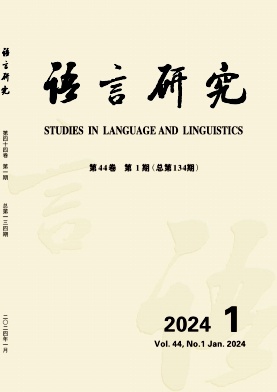
语言研究(不收版面费审稿费)
C刊,北核,科核,AMI扩,武B+
CN中文-季刊影响因子0.576
-
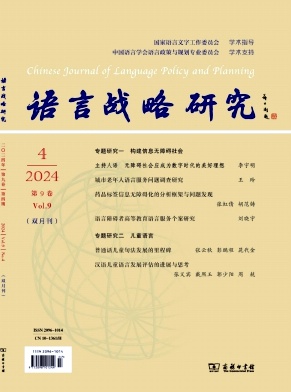
语言战略研究(不收版面费审稿费)
C刊,北核,武A,AMI扩
CN中文-双月刊影响因子2.785
常见问题
-
第二语言研究杂志杂志社官网、联系方式是什么?
第二语言研究杂志杂志社官网:https://benjamins.com/catalog/jsls
投稿网址:https://www.editorialmanager.com/jl2s
投稿邮箱:jsls2016@126.com(官网邮箱) -
第二语言研究杂志杂志是核心期刊么?
第二语言研究杂志是核心期刊,级别是:AMI入库, 是:语言文字分类下的知网目次收录的期刊。
-
请问你们是第二语言研究杂志杂志社吗?
我们不是《第二语言研究杂志》杂志社。本站主要从事期刊信息展示与期刊推荐,不是任何杂志官网,直投稿件请联系杂志社。本站仅提供免费的学术指导、论文辅导、期刊投稿信息整理收集服务。
-
你们指导服务后可以保证文章被发表吗?
期刊发表的成功与否,主要取决于文章内容的质量。编辑老师会根据研究领域、创新性等多因素进行考量。我们会帮助您理解期刊的发表要求,助力提升发表几率,从而增加发表的机会。
-
晋级论文能否在报纸上发表?
在学术界,论文的发表往往被视为研究者职业发展的重要一环。晋级论文,即为了获得更高职称或学术地位而撰写的学术论文,通常需在专业期刊上发表。然而,许多人可能会问
